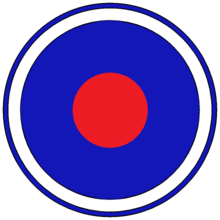2nd Infantry Division (South Korea)
| 2nd Infantry Division | |
|---|---|
 Shoulder sleeve insignia | |
| Active | Formed May 12, 1949 |
| Country |
|
| Branch |
|
| Type | Infantry |
| Role | Zone defense |
| Part of | III Corps (South Korea) |
| Garrison/HQ | Yanggu County, Gangwon |
| Nickname(s) | "Furious Wave" |
| Engagements | |
| Commanders | |
| Notable commanders | Col. Yu Sung Ryol |
The 2nd Infantry Division is a military formation of the Republic of Korea Army (ROK Army).
Current structure
- Headquarters:[1]
- Air Defense Artillery Battery
- Armor Company M-48A5K
- Chemical Company
- Signal Battalion
- Reconnaissance Battalion
- Engineer Battalion
- Support Battalion
- Medical Battalion
- 17th Infantry Regiment
- 31st Infantry Regiment
- 32nd Infantry Regiment
- Artillery Regiment
History
It was formed during the Korean War and was part of the defensive line in the Third Battle of Seoul.
The 17th Infantry participated in the Battle of Pusan Perimeter.[2]
Beginning on December 26, 1950, Communist Chinese Forces struck hard at United Nations units on the western approaches to Seoul. Supporting attacks occurred as well in the central and eastern parts of the line. The Chinese hit the ROK units hard, and again several units broke. Two out of three regiments of the 2nd Division fled the battlefield, leaving the 17th Regiment to fight alone and hold its position for hours despite heavy losses. General Ridgway reluctantly ordered a general, but orderly, withdrawal, with units instructed to maintain contact with the enemy during their retreat, rather than simply giving up real estate without inflicting losses on the enemy.[3]
See also
References
| Wikimedia Commons has media related to 2nd Infantry Division (Republic of Korea). |
- ↑ Pike, John. "2nd Infantry Division". www.globalsecurity.org.
- ↑ Webb, William J. The Korean War: The Outbreak. United States Army Center of Military History. CMH Pub 19-6.
- ↑ Stewart, Richard W. The Korean War: The Chinese Intervention. United States Army Center of Military History. p. 28. CMH Pub 19-8.